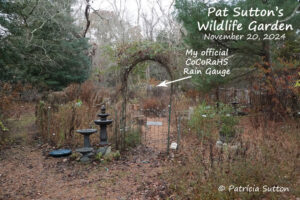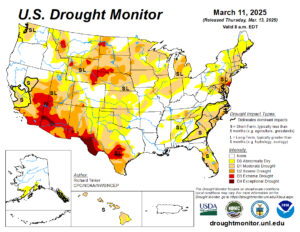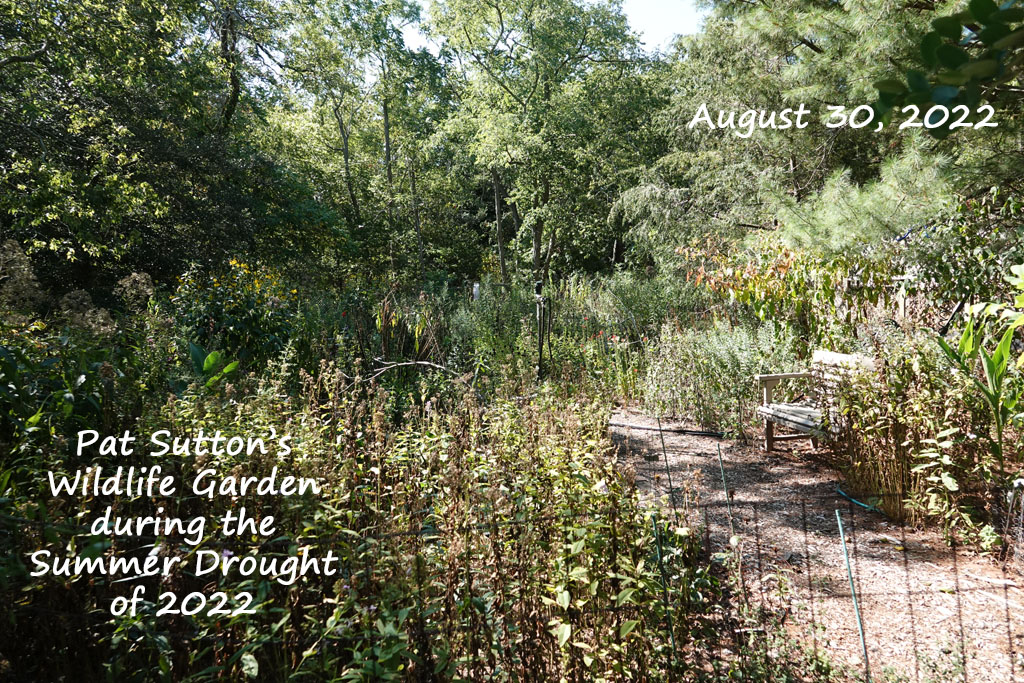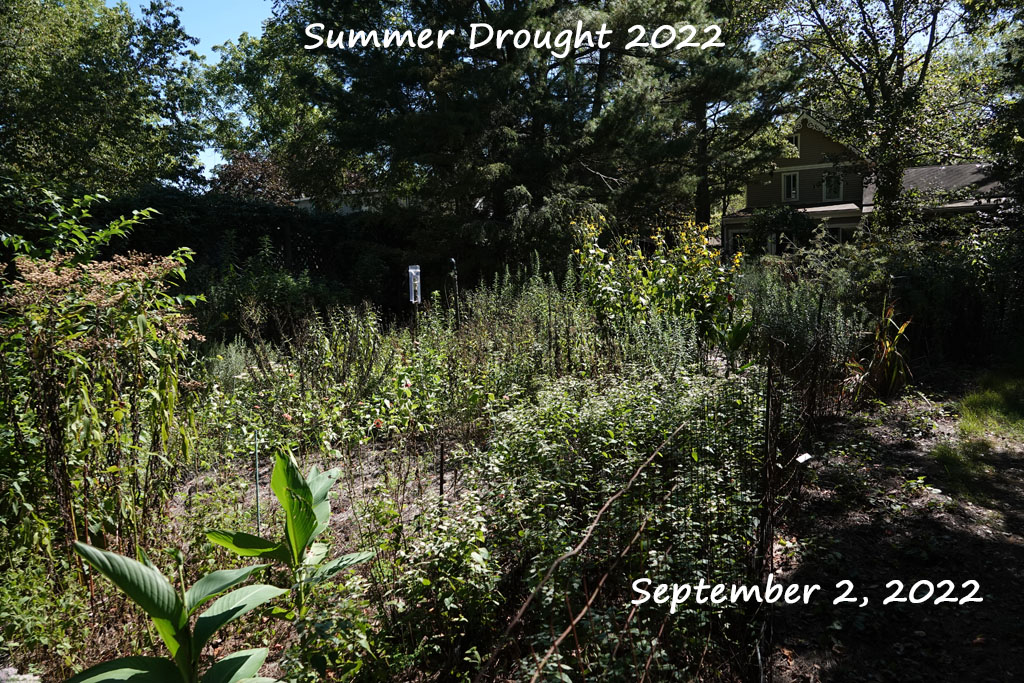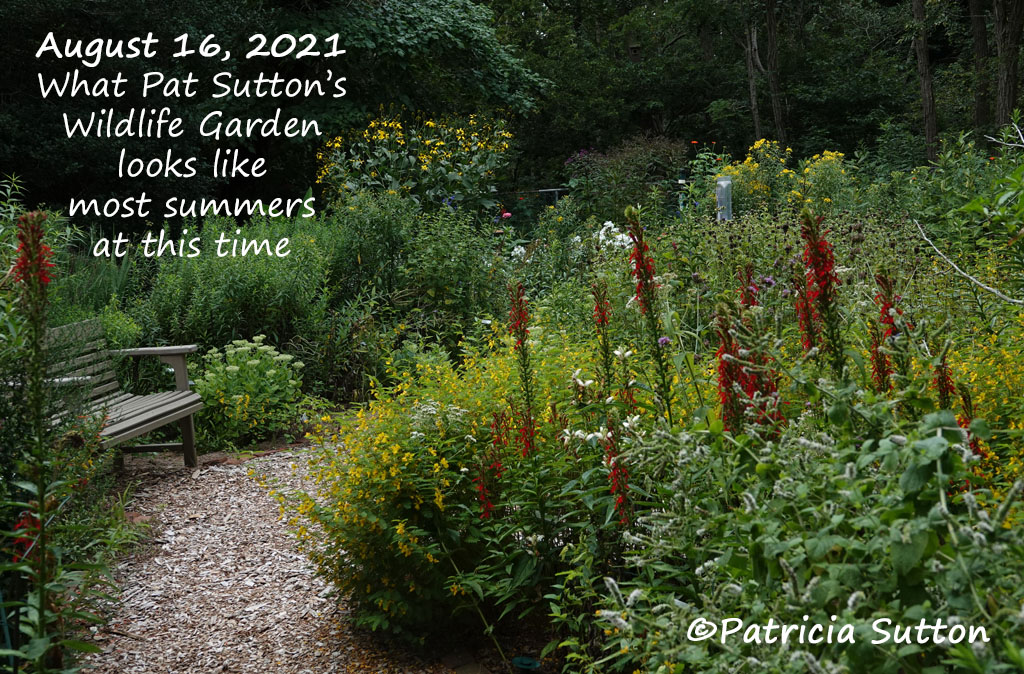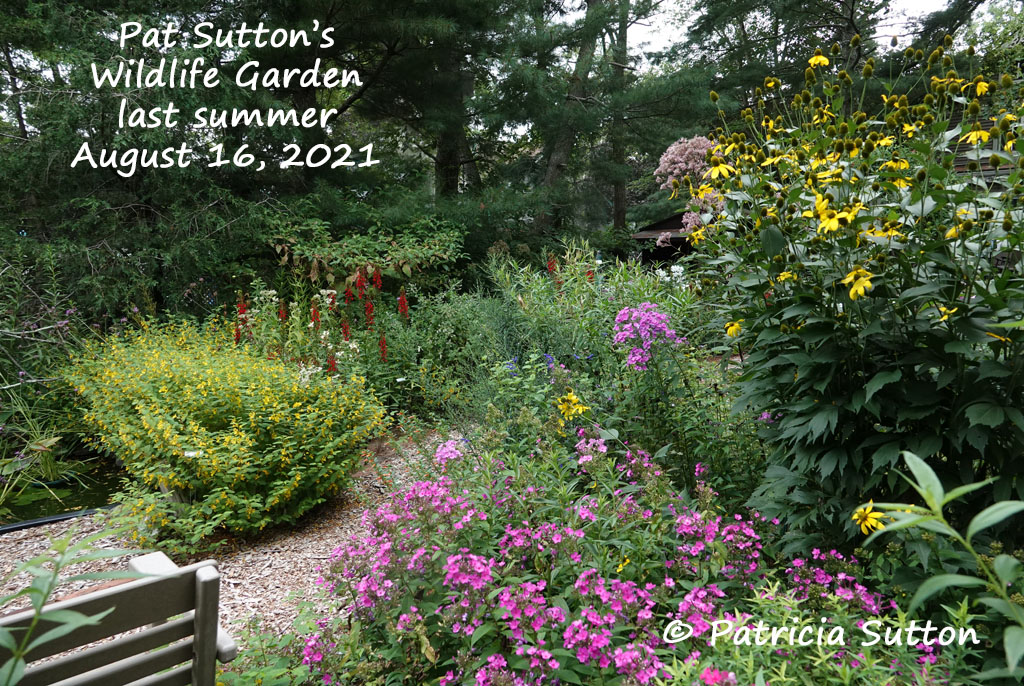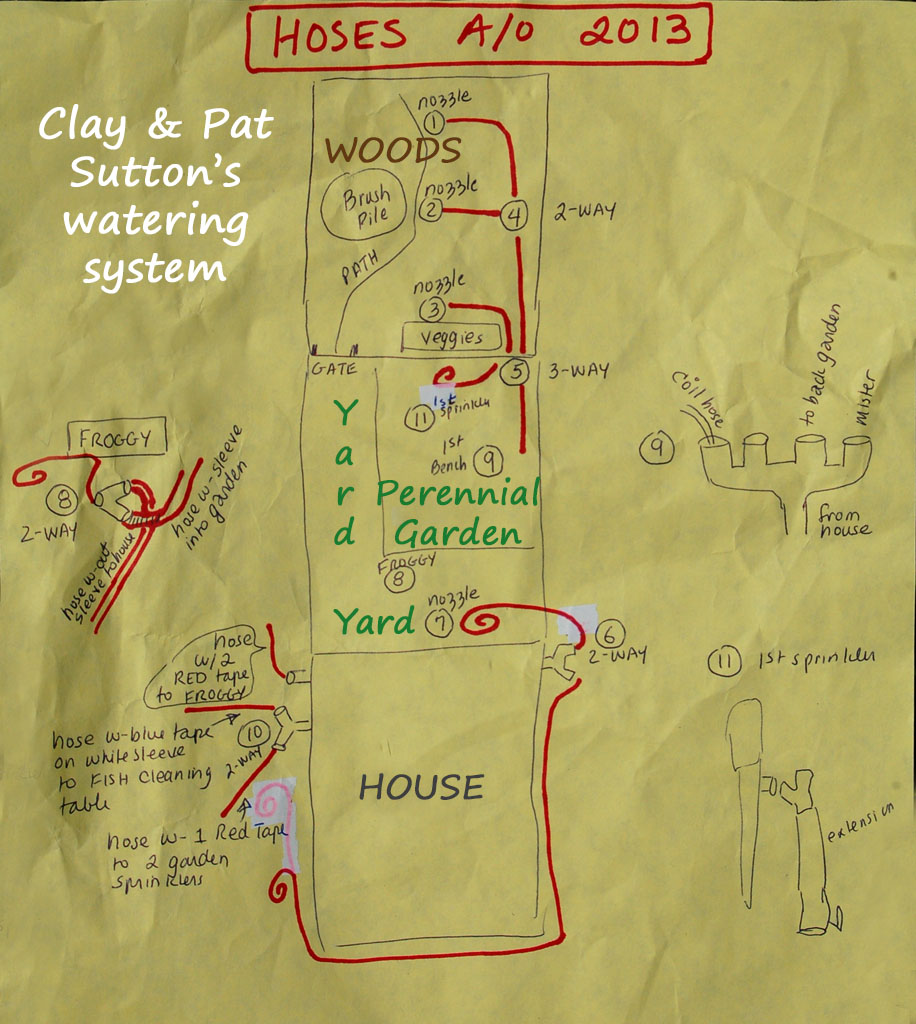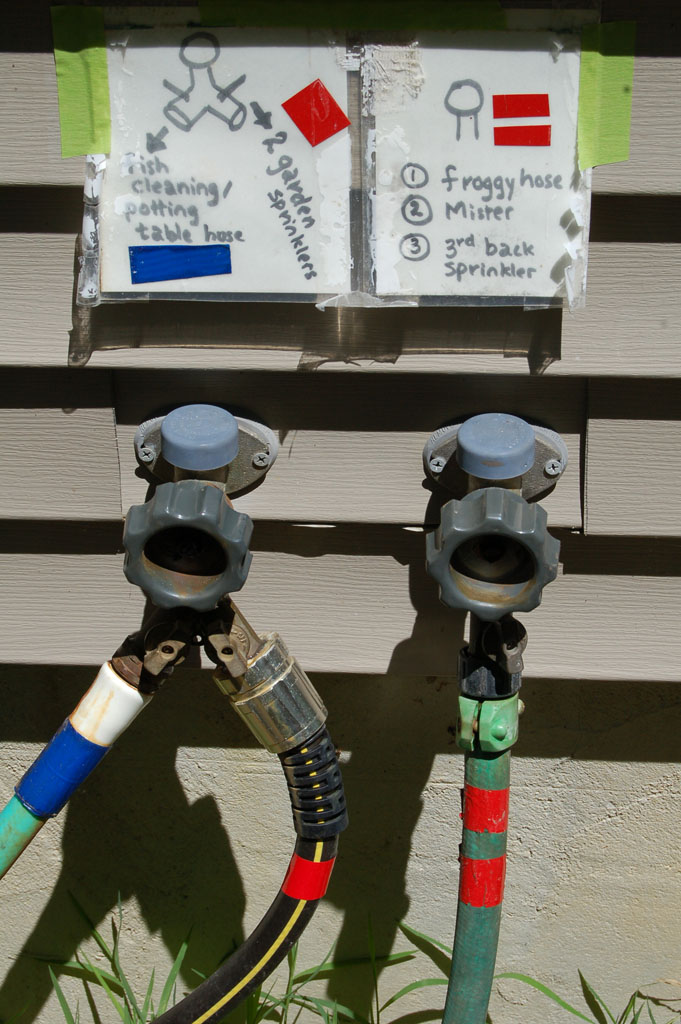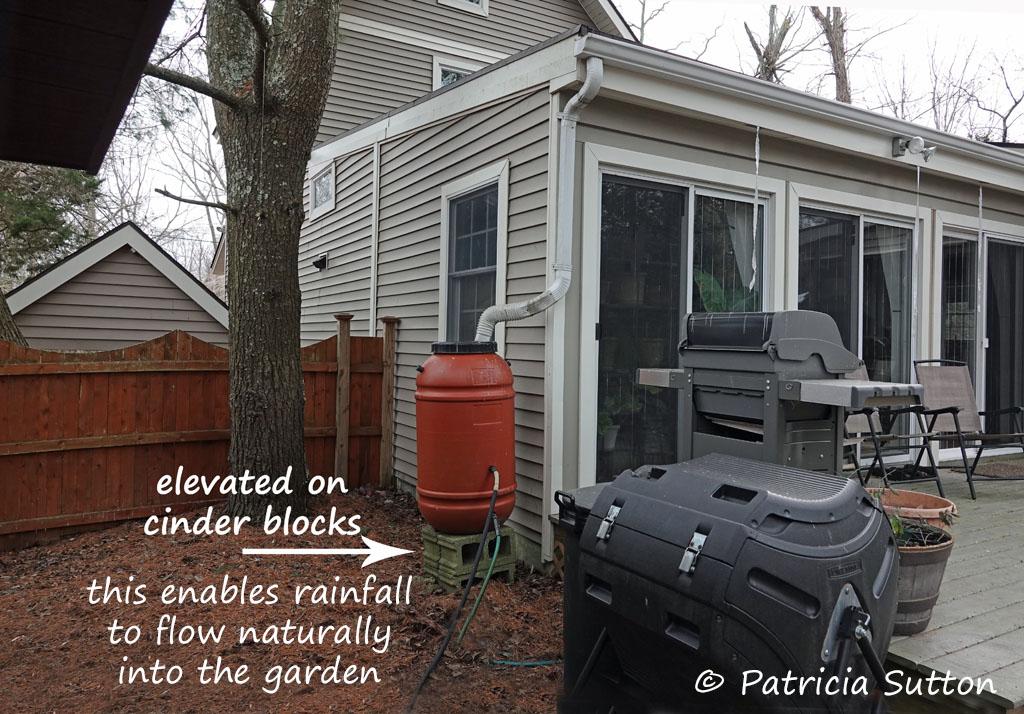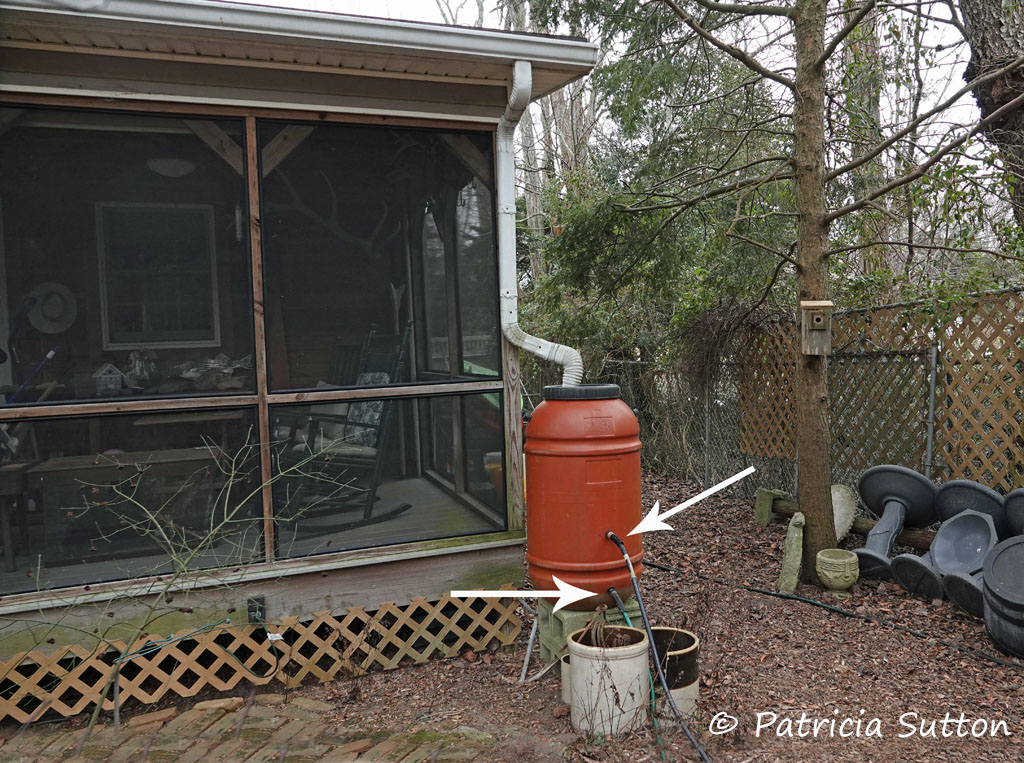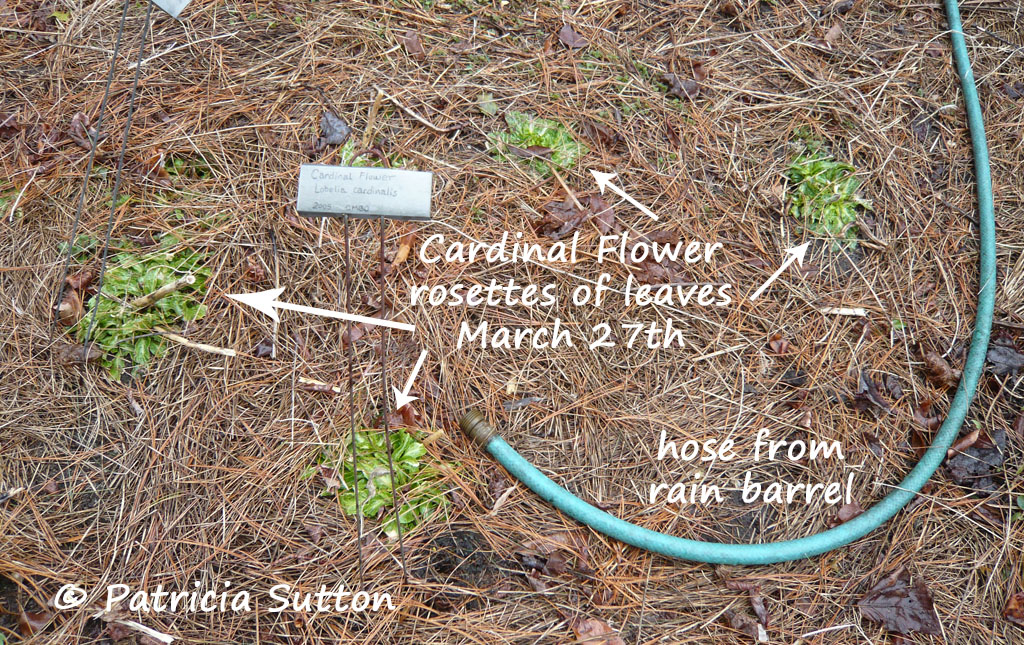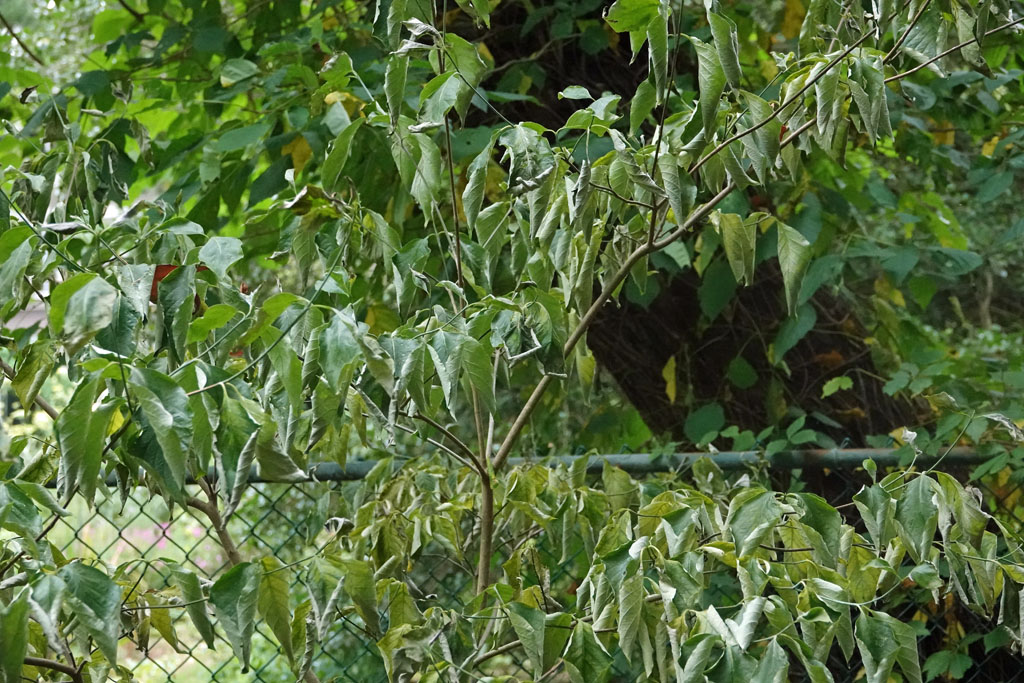Hi Gang,
As a wildlife gardener I’ve been tuned in to droughts and how they affect wildlife, wildlife gardens, and nectar and host plants in natural areas. Last summer’s heat dome and endless drought resulted in many of the Chocolate Cake nectar plants in my garden blooming all too quickly and going to seed, long before normal. Forget natural areas where no one was wetting down native nectar and host plants. They were crisped beyond recognition. Vernal ponds are wet in the winter and early spring, then dry out by summer. Many of our vernal ponds were dry this past winter, resulting in salamanders having no place to breed. Salamanders seek these seasonally wet sites for breeding because they are fish free (fish are primary predators of salamanders and their young). Overwintering butterflies and moths in the egg, caterpillar, or chrysalis/pupa form become desiccated during lengthy stretches without rainfall. There are many, many other examples of wildlife suffering during long periods of drought.
Even native plants are affected during long periods of drought. Southern NJ has been in EXTREME DROUGHT for some time now: 2024-2025.
In 2024 my wildlife garden was on a number of wildlife garden tours. I love to share my wildlife gardens and all the wildlife they attract! But last year’s drought took the joy right out of those tours. Clay and I spent all of our free time watering, so some of our native plants would be alive to benefit pollinators and other wildlife. We did what we could, watering in triage the parts of our 1/2 acre property that were suffering the worst. It was a never ending effort. Even native trees and shrubs were dying. The garden tours were full of excited native plant gardeners and they saw lots, but they did not see the abundance I am used to and that was painful to me. During the tours I, of course, put on a smile and showcased what was surviving in our gardens and the wildlife there, but know that it was hard to be joyful when our area was being brutalized by a heat dome coupled with unending drought.
As of March 11th, southern NJ (all of Cape May, Atlantic, and much of Cumberland County) is still in EXTREME DROUGHT (that is a step beyond SEVERE DROUGHT) as you can see from the latest U.S. Drought Monitor Map (above). To follow this drought click here (updated each Thursday): Drought Monitor Map for the U.S. You can zero in on our area, the Northeast, here: Drought Monitor Map for the Northeast. In each you can see that southern NJ stands out like a bright RED sore thumb (Extreme Drought).
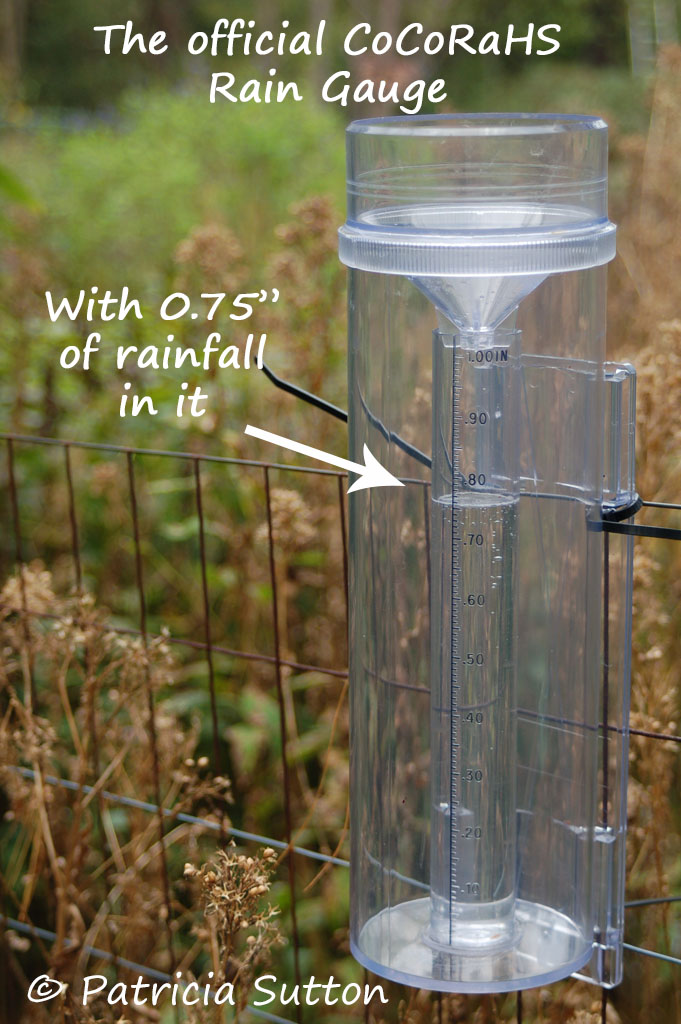 I have been curious about the rainfall in my garden for years. I’d talk with friends only a couple of miles away who were inundated with rain the night before, when all we got was a sprinkle. So, you can imagine how excited I was to learn about and become part of the “Community Collaborative Rain, Hail and Snow Network (CoCoRaHS)” in October 2013. CoCoRaHS is made up of “Volunteers working together to measure precipitation across the nations” (US, Canada, and the Bahamas).
I have been curious about the rainfall in my garden for years. I’d talk with friends only a couple of miles away who were inundated with rain the night before, when all we got was a sprinkle. So, you can imagine how excited I was to learn about and become part of the “Community Collaborative Rain, Hail and Snow Network (CoCoRaHS)” in October 2013. CoCoRaHS is made up of “Volunteers working together to measure precipitation across the nations” (US, Canada, and the Bahamas).
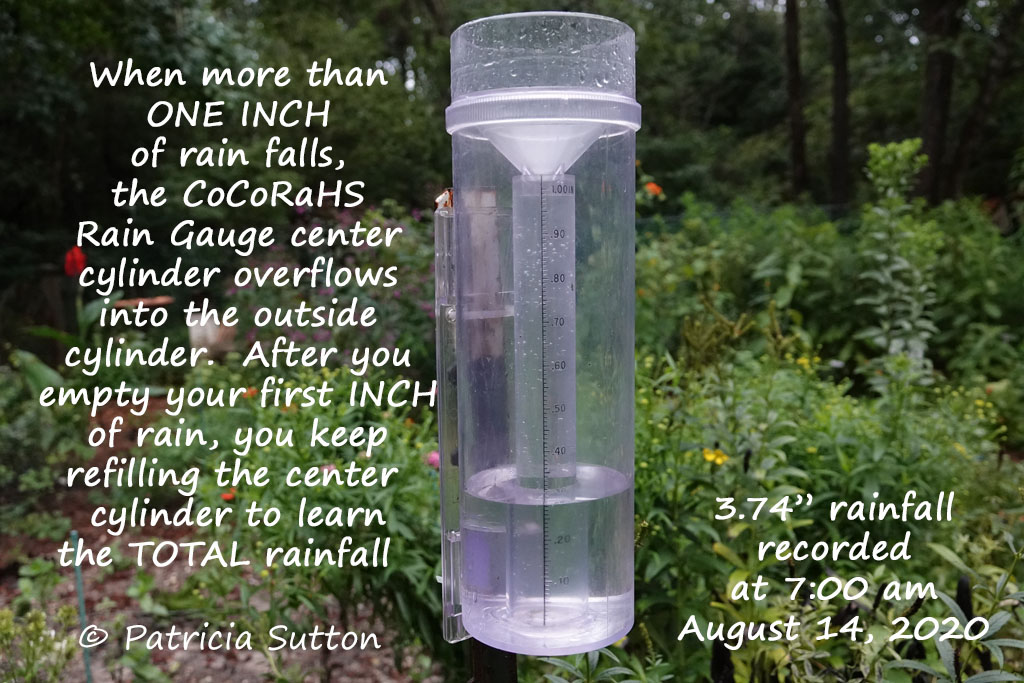 I submit my rainfall (or snowfall) each morning at 7:00 am from my official CoCoRaHS Rain Gauge. When I travel I am able to submit the cumulative rainfall when I return. If you live in NJ, my garden is CoCoRaHS Station Number NJ-CM-29. Check it out!
I submit my rainfall (or snowfall) each morning at 7:00 am from my official CoCoRaHS Rain Gauge. When I travel I am able to submit the cumulative rainfall when I return. If you live in NJ, my garden is CoCoRaHS Station Number NJ-CM-29. Check it out!
Rainfall — How Much?
Learn exactly how much rainfall
your garden enjoyed
by joining CoCoRaHS
(Community Collaborative Rain, Hail and Snow Network)
Click HERE to learn about CoCoRaHS
(you’ll find links to “sign up”
as a CoCoRaHS Volunteer Observer here too)
The only cost to you will be the purchase of
a CoCoRaHS Rain Gauge
(you can donate to CoCoRaHS annually too
if you’d like; I always do)
Here is an explanation about acceptable rain gauges for CoCoRaHS:
CoCoRaHS Rain Gauge.
Here is where you can order your CoCoRaHS Rain Gauge. Mine is the 3rd one across, “The Official original CoCoRaHS gauge,” but I see there is one other acceptable gauge now, the TROPO Gauge – the official premium CoCoRaHS gauge.
Happy Wildlife Gardening,
Pat

